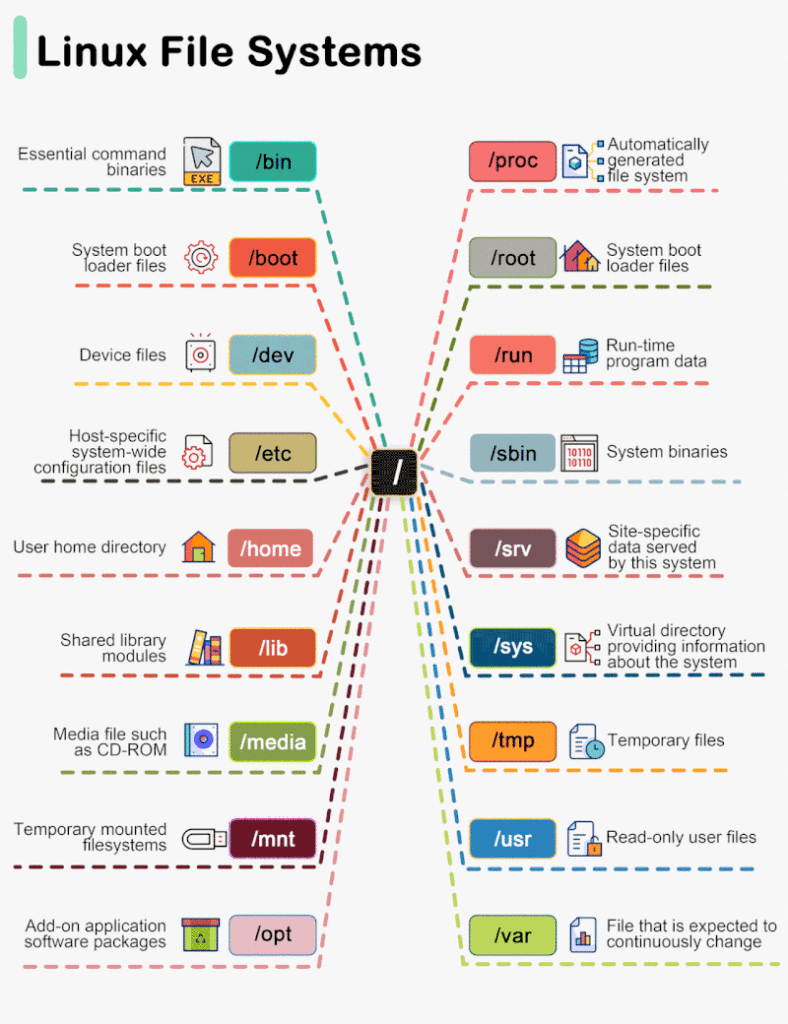Linux file systems are crucial for managing how data is stored and retrieved on your computer. Unlike other operating systems, Linux offers a variety of file system types, each designed for specific scenarios and performance needs. This guide provides a detailed look at common Linux file systems, their characteristics, and how they fit into the Linux directory structure.
What is a Linux File System?
A file system is a way of organizing and storing files on a hard disk, SSD, or other storage devices. It dictates how data is stored in files and directories and how it is accessed. In Linux, the file system is hierarchical, starting from the root (/) directory, from which all other directories branch out.

Common Linux File Systems
Ext4 (Fourth Extended Filesystem):
- Purpose: It’s the default and most popular file system in Linux distributions.
- Features: Ext4 supports large file sizes and volumes, has improved performance and reliability over its predecessors, and uses journaling to keep track of changes.
XFS:
- Purpose: Ideal for high-performance and large file systems.
- Features: XFS excels in handling large files and performs well with parallel input/output operations because of its scalability.
Btrfs (B-tree File System):
- Purpose: Suitable for managing large data volumes with a focus on fault tolerance, repair, and easy administration.
- Features: Btrfs supports features like snapshots, dynamic inode allocation, and integrated device management.
FAT32 and NTFS:
- Purpose: Mostly used for compatibility with Windows systems.
- Features: While not typically used as the primary Linux file system, FAT32 and NTFS are necessary for dual-boot systems and external storage devices.
The Linux Directory Structure
At the core of the Linux operating system is its directory structure. Here’s a simplified view of its layout:
- / (Root): The base of the file system.
- /bin: Contains essential user binaries (programs).
- /etc: Hosts system configuration files.
- /home: Home directories for system users.
- /var: Where variable files such as logs and databases are stored.
- /usr: Secondary hierarchy for read-only user data; contains the majority of user utilities and applications.
- /tmp: Temporary files.
The attached image provides a visual representation of how these directories are structured within Linux.
Why Does It Matter?
Understanding your Linux file system allows for better system management and troubleshooting. It helps in efficiently planning storage, backups, and system recovery processes. Each file system type offers different advantages, so knowing which one suits your needs can significantly improve your system’s performance and reliability.
Conclusion
Whether you’re a system administrator or a casual Linux user, understanding the file systems and directory structure is fundamental. It not only helps in day-to-day management but also deepens your understanding of how Linux systems work, which is essential for any DevOps career.